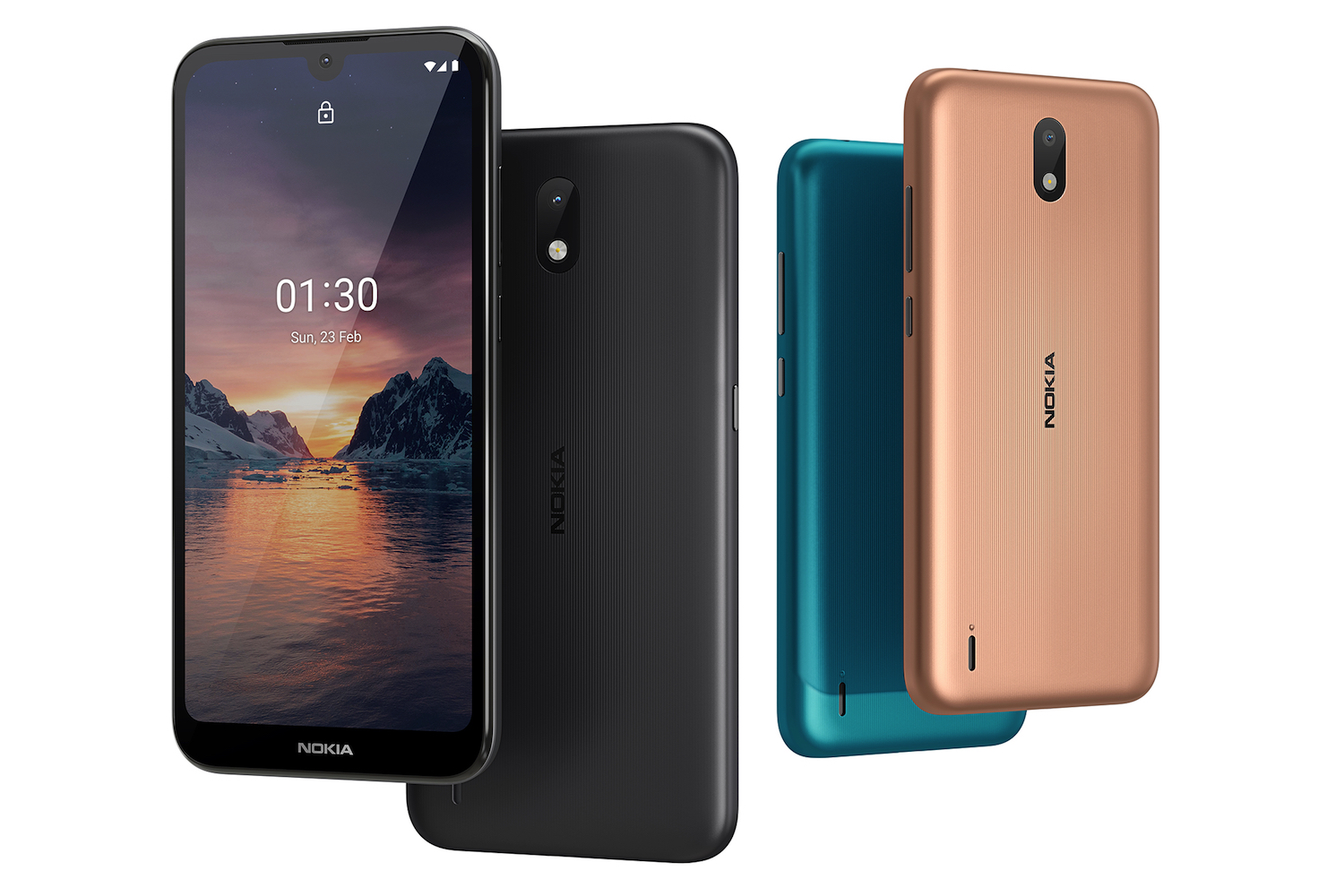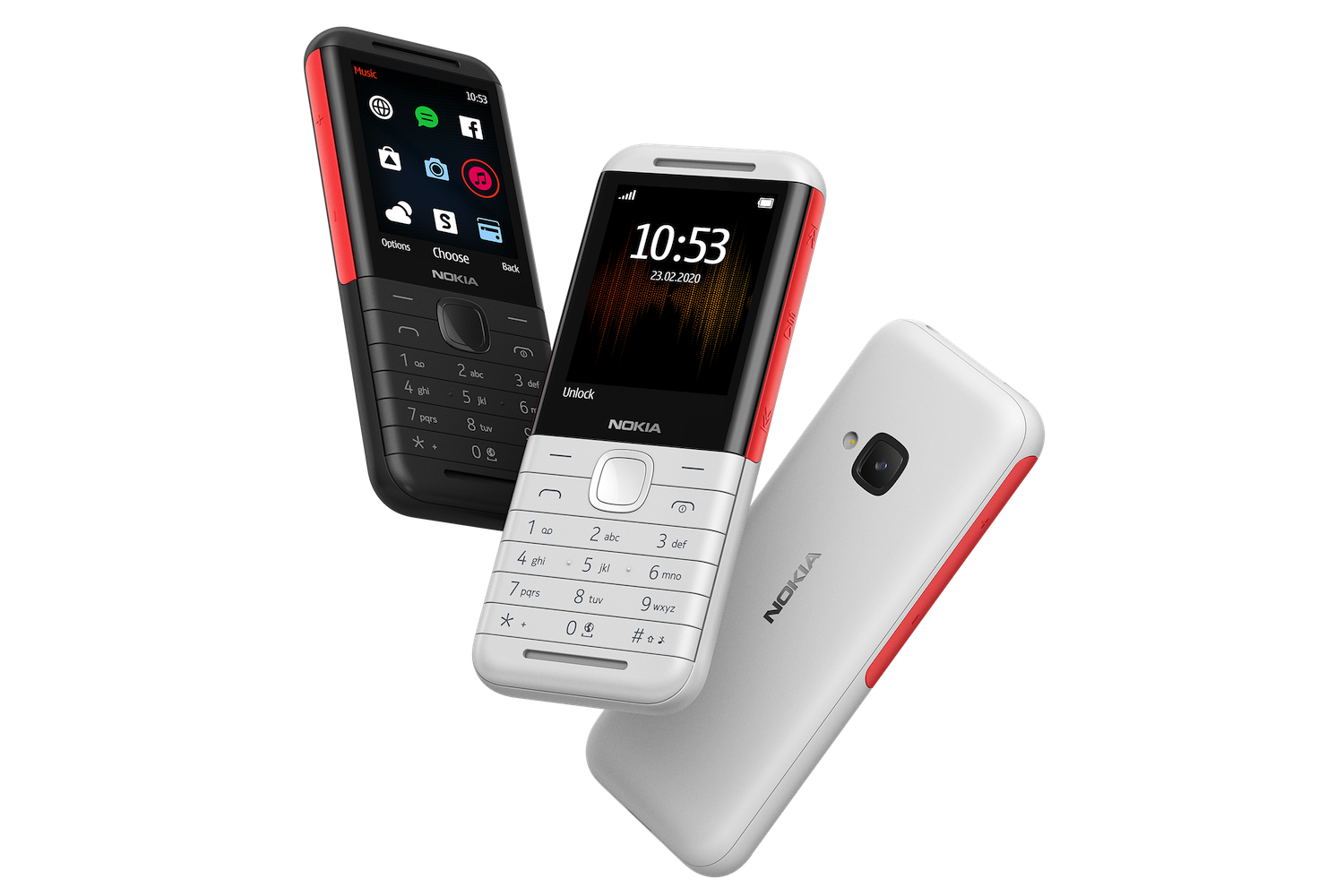Announcements from smartphone manufacturers continue to arrive, following the cancellation of Mobile World Congress at the end of February, due to concern over spreading the coronavirus, now known as COVID-19, at the time. The latest is HMD Global, the company with the license to produce Nokia smartphones. It has four new phones and an unexpected new service, too.
Meet the Nokia 8.3 5G, the Nokia 5.3, the Nokia 1.3, and the Nokia 5310.
Nokia 8.3 5G
With the Nokia 8.3 5G, HMD Global is living up to its name. The company describes the device as the world’s first “global” 5G smartphone, due to the massive list of 5G compatible bands the modem can use. It can access a 5G signal wherever the service is available, without worrying about the specific implementation the service you’re connecting to uses.

Like 3G and 4G phones, the modem inside a 5G phone has to support a wide variety of bands to capture the best signal, whether you’re inside or out, in a good coverage area or not. The Nokia 8.3 5G uses the Qualcomm Snapdragon 765G modular platform, which not only supports mmWave and Sub-6 5G, but covers more bands than any other phone at the moment. HMD Global actually held back this phone so it could launch with the Qualcomm Snapdragon 765G chipset.
On the back is a PureView Quad Camera, set inside a circular module in the top center of the glass rear panel. The design is a familiar one if you’ve seen the Huawei Mate 30 Pro, but a distinct departure for Nokia, although it does still comply with its obsessive commitment to symmetry. The main 64-megapixel sensor is joined by an ultra-wide sensor, a depth sensor, and a macro sensor. All the lenses are Zeiss certified.

There’s a heavy focus on Ultra HD 4K video recording. The phone touts a cinematic video capture mode, where it shoots in a 21:9 aspect ratio with Hollywood-style color grading, the ability to alter the dynamic range, and even add anamorphic lens flare effects.
This sounds complex, especially based on our experience with the Sony Xperia 5 which pulled in tech from Sony’s cinematic experience to create a similar feature, However, HMD Global told me all this can be performed automatically, or by using special profiles, unless you want to dig deeper into the edit mode. That’s good news for those who aren’t cinematographers.
The camera also has an action cam mode that can shoot at 60FPS for smoother video. It can capture surround sound audio and offers wind cancellation to improve audio quality outdoors.
Going back to the Nokia 8.3 5G’s design, the chassis is made from aluminum, while the back is made from Gorilla Glass which has been treated to a metallization process, giving it an unusual light refraction pattern inspired by the Northern Lights. It looks fantastic in photos, and it’s great to see Nokia adopting a new visual style and contributing to the trend for colorful, eye-catching colors without losing its identity. On the front is a 6.81-inch screen which can show SDR and HDR content, and upscale to HDR as well.
Nokia 8.3 5G price and availability
HMD Global is so convinced that 5G is the way forward, it’s not making a 4G-only version of the Nokia 8.3. It has also inexplicably leapt over the Nokia 8.2, saying it won’t be releasing a phone with that name, so don’t go looking for it. Nokia believes the Snapdragon 765G chip is the right choice, and because of the decision to use it, you’ll have to wait until summer you can buy the Nokia 8.3 5G.
When it arrives it’ll cost 600 euros, or about $650, for the standard 8GB/64GB model. While we don’t know the U.S. price yet, we do know it’ll be sold through Amazon and Best Buy. There’s a chance the phone will be announced with other carriers between now and the release date.
Nokia 5.3, Nokia 1.3, and Nokia 5310
The Nokia 8.3 5G is the main announcement from HMD Global, but it’s not the only new phone. There are three others — the Nokia 5.3, the Nokia 1.3, and the Nokia 5310. The Nokia 5.3 follows the 8.3’s design change with a circular camera bump on the back, which contains four sensors including a wide-angle and a macro. On the front is a 6.55-inch screen with a hole-punch selfie camera, and inside is a Snapdragon 665 processor with 4GB of RAM and 64GB of storage. It comes in black, blue, or an unusual sand color, and will cost 190 euros, about $205, when it’s released in April.
More interesting is the Nokia 1.3. This is an Android Go phone, a budget device that’s still guaranteed to be updated to Android 11 Go and Android 12 Go, too. The big news here is it comes with Google’s Camera app, to which Nokia has added its bokeh and night mode technology, making this 95 euro, approximately $102, phone capable of taking decent photos. It has a Snapdragon 250 chip and 1GB of RAM, and a 2,300mAh battery that will last for the entire day. It will be released in April too.
Finally, we have another re-imagining of a classic Nokia phone. The Nokia 5310 takes the 2007 Nokia 5310 XpressMusic feature phone as its inspiration, repeating the curvy lozenge shape body and side-mounted audio controls many loved from the old model. It has dual speakers set inside large boxes to provide more volume, a MicroSD card slot, and an FM radio too. It’s only a 2G phone, and runs the S30 Plus user interface rather than anything more complex like Android; but it only costs 40 euros, just $43.
Sadly, the fun Nokia 5310 won’t come to the U.S., mainly due to the fact it’s a 2G phone and there’s no demand for such a device. The Nokia 5.3 and Nokia 1.3 will both be sold through online retailers after release.
HMD Connect global data SIM
Following on from the global theme set by the Nokia 8.3 5G, HMD Connect is a new service from HMD Global. It’s a simple way to get a small amount of roaming data for use globally — a massive 180 countries in total — at a low cost. It’s 10 euros, which is about $11, for 1GB of data that can be used anywhere in the world, and another 1GB can be added for a further 5 euros/$5 each time.
Initially, HMD Global will launch this as a beta service, and SIMs can be ordered online, although some carrier partners will include a SIM in device boxes. Eventually, as eSIMs become more common, this will be an option for HMD Connect as well. It’s not meant to replace your carrier. It’s instead designed for frequent and infrequent travelers, or those wanting to mostly disconnect when away, without being totally out of contact.
Conclusion
HMD Global promised an affordable 5G phone in 2020, and it has delivered with the Nokia 8.3 5G. Considering the Galaxy S20 5G starts at $1,000, for 600 euros, or about $650, it’s great value given the 5G capability, camera, screen tech, and design. Beyond that, you receive a Google Pixel-style build of Android with the guarantee of software and security updates for the near future, too. It’s also refreshing to hear efforts are being made to improve the usability of the complex camera system, after my slightly disappointing experience on the Nokia 9 PureView.
It’s one of the most interesting, and perhaps most influential, phone announcements we’ve seen in 2020 so far, due to its ability to make the most of the growing 5G network around the world. I’ll be sure to put the phone through its paces when it’s released this summer.






